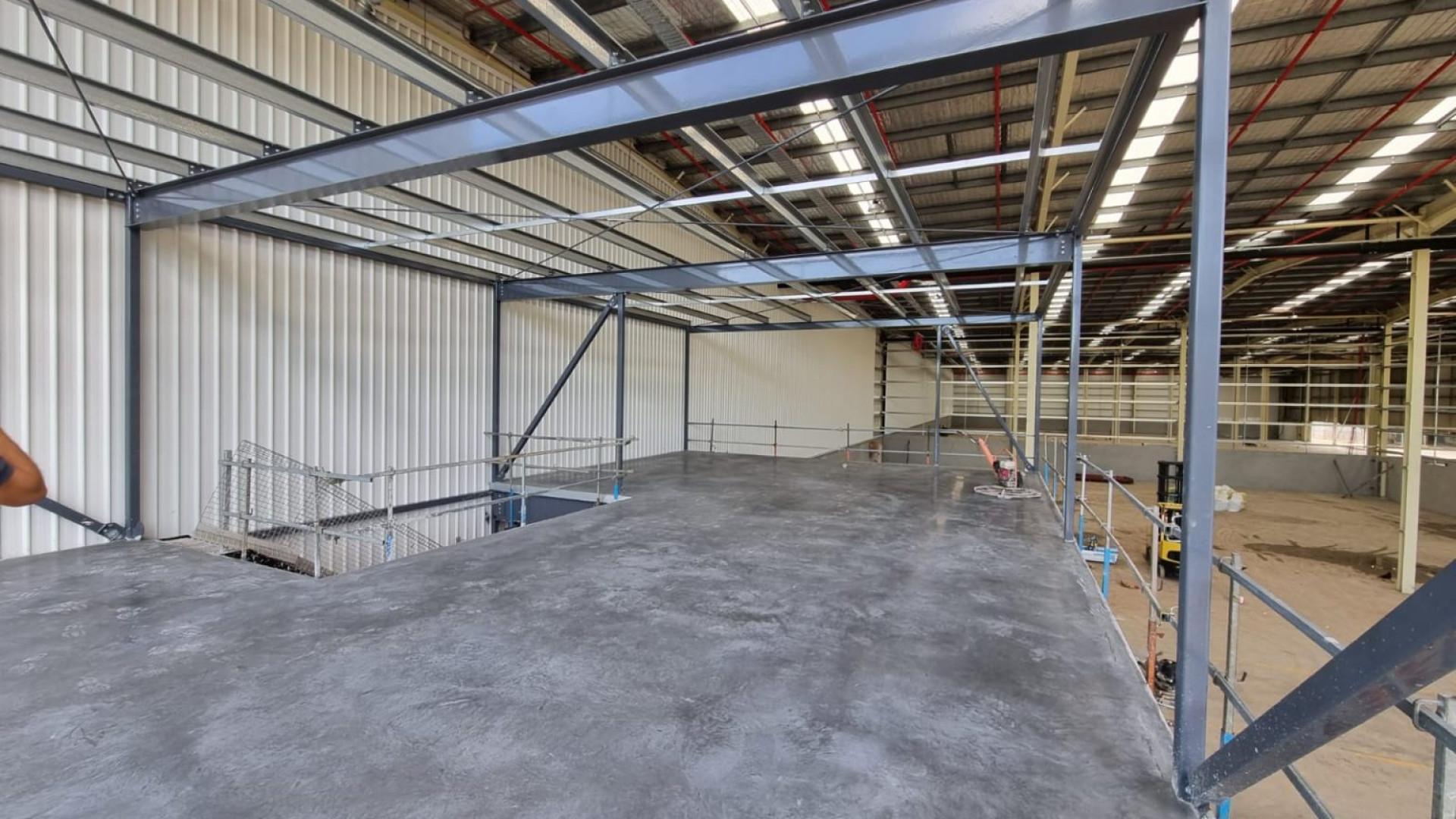However, a concrete mezzanine has its setbacks too, which you must consider before choosing concrete as a material for your mezzanine.
Here’s a detailed explanation of the construction, uses, and pros and cons of a concrete mezzanine floor!
Concrete Mezzanine Floors
Concrete is mainly used for new construction or in the form of pre-stressed beams. Less chosen than wood because of its greater weight, know that there are now lighter concretes that will weigh less on the existing structure.
For its part, the concrete mezzanine version is more complicated to implement. It’s heavy, which implies that it needs solid foundations and walls to support it: this is not always possible in renovation works if the warehouse is not designed to support so much weight.
Handling is also more important in building a concrete mezzanine floor: material used, formwork, and drying time are to be respected.
But once installed, it will have some major advantages.
Features of a Concrete Mezzanine Floor
- The concrete mezzanine floors have no vertical braces
- They don’t have struts
- Ranges can be up to 18 meters
- A calculation note is produced for each project
- Loads can range from 200kg to 4 tons
- All concrete mezzanines are entirely made of hot profile
- They are very adaptable to the various shapes required in the slab, so they conform to the formwork
- Especially indicated for traditional constructions of small to medium size that wish to have an exposed concrete finish.
Reinforced concrete slabs are structural elements that separate the consecutive floors of a building and, at the same time, serve as support for occupancy loads.
There are solid and lightened reinforced concrete slabs. As far as the solid ones are concerned, they are used in smaller spaces and are filled throughout their volume; that is, they do not have empty spaces.
The lightened slabs, for their part, are built, leaving empty spaces on their lower face so that they have less concrete and are lighter. This allows them to be used in larger spaces with a greater distance between supports.
Construction of a Concrete Mezzanine Floor
Here’s a step-by-step construction process of a concrete mezzanine floor:
- First, the steel structure is created by installing beams and columns to support the concrete floor.
- Once the steelwork is installed, a tray system (deck) such as HiBond or ComFlor is laid on top.
- Then reinforcing is laid on the floor, and the placement of the exterior boxing is done, followed by pouring concrete on top of the deck.
- Only the supporting steel needs fire rating in this process which is usually done using intumescent paint. A fire GIB can also be used for this.
- For a modern industrial look, the floor’s underside is often left exposed.
Pros of Concrete Mezzanine Floors
- Concrete is a strong material that can withstand very heavy loads and is also fire and water-resistant, and has a high degree of resistance to cracks and fissures.
- The all-concrete option for mezzanine is still very common in some places due to fire regulations.
- Concrete has a short building time. In large spaces (over 300m²), a concrete mezzanine system seems to be more feasible than other materials due to its lower cost.
Although steel cost is also added to the total cost of building a concrete mezzanine, it requires fewer labour hours resulting in shorter labour costs and overall build time.
- Concrete floor platforms are designed on a collaborating floor basis allowing technical specificities with much better acoustic properties. It can reduce the noise transfer between the different floor levels if the mezzanine floor has a lot of foot traffic.
- Before the pour, you can adjust the formwork and piping, providing onsite flexibility.
- It is a low-maintenance material.
- Commercial builders are experts in building concrete structures, and it has a common application method.
- If you leave the concrete and supporting steel exposed, it gives a clean industrial look.
Cons of Concrete Mezzanine Floors
- Concrete mezzanine floors are not very suitable for level separations where there is very little passage.
- Because of their heaviness, they are not perfect for mezzanines that will rest on less solid foundations such as old walls or walls that are not strong enough
- Existing “beam and filler” systems tend to be left in the hands of big industries and are not readily available.
- As it is not an engineered product, concrete mezzanine construction brings uncertainty in terms of quality, such as the performance variations across the site, the construction temperature, and the surface and leveling friction.
- It involves a wet-poured construction process that tends to be difficult to meet tolerances during installation.
- Requires more construction time than steel and wood.
- It is less sustainable than steel mezzanine floorings
These were some of the pros and cons of a concrete mezzanine floor. We hope the information we provided has cleared your doubts about using concrete as a material for the mezzanine.
Regardless of the material you choose, make your mezzanine a professional matter! Whether you choose concrete for your mezzanine flooring or any other material, leave its construction to the best Mezzanine floors Sydney Company to play safe and get the desired results. They will provide you with the right options that best suit your needs and budget.


